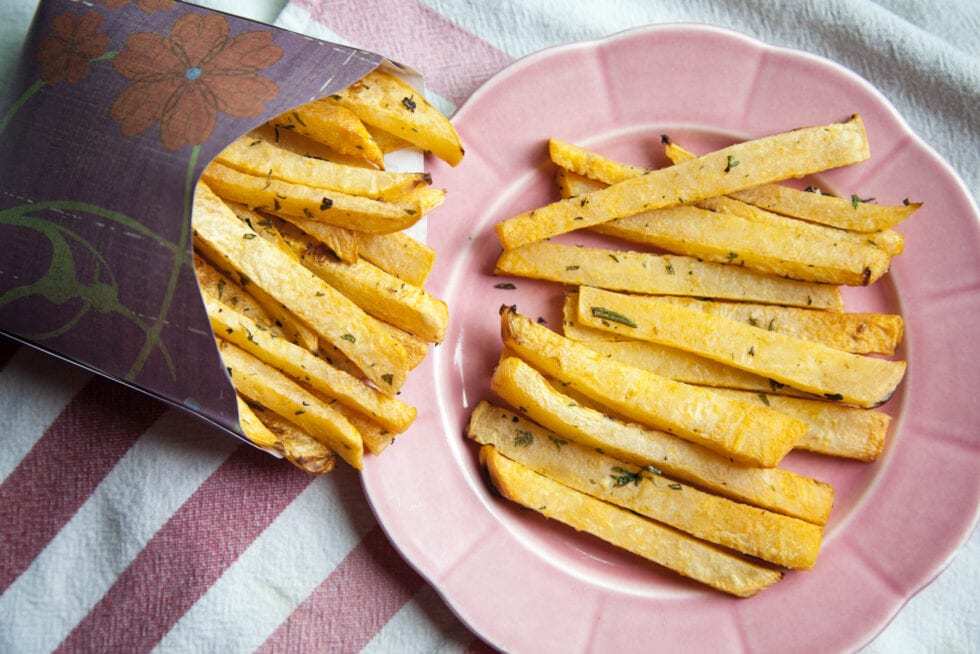
Low Histamine Rutabaga Fries Recipe (Low Oxalate, Low Lectin, Low FODMAP, Low Salicylate)
You’ll be adding this rutabaga fries recipe to your favorite low histamine recipes! It makes a great snack, appetizer, or side dish. (We all know side dishes can be the real star of the meal!)
Want that steak house experience of hearty steak fries with your low histamine bison steak?
Or maybe you’re tolerating low histamine beef and grinding your own hamburger. You might be craving the classic hamburger and french fries combo.
Keep reading to learn how to make these flavorful and filling oven fries! It uses an often overlooked vegetable that fits many food intolerances commonly associated with Mast Cell Activation Syndrome (MCAS)… the rutabaga!
This rutabaga fries recipe is:
- Low histamine
- Low oxalate
- Low lectin
- Low salicylate optional
- Low FODMAP optional
- Low carb
- Dairy free optional
- Gluten free
I’ll give you some of my top tips for making this rutabaga fries recipe. Plus, you’ll learn how to customize it to meet your own dietary needs.
But first, are you familiar with this unusual veggie and its health benefits?
It’s important you know that this blog post is for informational and educational purposes. It’s not meant to treat any health condition or to be prescriptive for anyone. If you have any medical condition, it is critical you work under the care and guidance of a licensed medical provider.
What Is a Rutabaga?
Rutabagas are a root vegetable just like the potato, turnip, and sweet potato.
They can also be referred to as a swede, Swedish turnip, wax turnip, or neep.
FUN FACT: The rutabaga belongs to the mustard family. You can eat both the roots and leaves of rutabagas.
Rutabagas originated in Europe in the late Middle Ages. Common thought is that they are a cross between turnips and wild cabbage.
To me, the taste and texture are a mix of something like a turnip and a potato.
Rutabagas are sweeter than turnips. They aren’t spicy like turnips and radishes can be.
But the texture and earthy taste are similar.
Speaking of textures…
Have you ever thought that a potato had a mealy texture? If so, you aren’t alone.
Some people like the heartiness of a potato but not the mealiness of it.
If you are one of those people, you’ll be satisfied with the rutabaga. These rutabaga fries are hearty and filling like potato fries but with a smoother texture.
And if you are eating low carb, rutabagas are a great low carb alternative to potatoes.
Related Article: SIBO Diet, Lifestyle Changes, and Supplements for MCAS and HIT
Another good reason to consider using rutabaga in your recipes? They are stacked with vitamins and minerals important for good health.
Read more about the benefits of rutabaga next.
Health Benefits of Rutabaga
Fresh produce, like rutabagas, provides you with natural sources of vitamins and minerals that support your wellness.
Here’s a brief overview of the top nutrients in rutabagas and how they can support you if you have Mast Cell Activation Syndrome and Histamine Intolerance:
- Fiber
- Calcium
- Potassium
- Vitamin C
Let’s start with fiber.
Fiber
Many people with Mast Cell Activation Syndrome (MCAS) report having digestive issues.
I’ve struggled with gut issues related to Small Intestinal Bacterial Overgrowth (SIBO), Small Intestinal Fungal Overgrowth (SIFO), and MCAS.
Studies show that fiber can help your digestive health by cleaning out bacteria and other buildup from your gut.
1 large rutabaga has 17.8 grams of fiber!
Calcium
You probably learned in elementary school that your bones need calcium to stay healthy.
But did you know that calcium also plays an important part in neural plasticity?
Neural plasticity is your nervous system’s ability to modify itself. And it plays a big part in getting stabilized when you have Mast Cell Activation Syndrome.
Related article: Nervous System Balance is Essential in MCAS
1 large rutabaga has 332 milligrams of calcium. That’s more than 1 cup of 1% cow’s milk which has 305 milligrams.
Potassium
Your cells require potassium for normal cell functioning. It helps regulate cell membranes. This indirectly controls immune cell signaling. Mast cells are immune cells!
To learn more about mast cell signaling check out this related article: Mast Cell Foundations: Mediators and Receptors.
Potassium has also been shown to help lower blood pressure. This leads to a reduced risk for heart disease and stroke.
One large rutabaga has 2350 milligrams of potassium.
For comparison, 1 large banana has 487 milligrams. That’s good news since you might be avoiding bananas if you’re on a low histamine diet.
I always say look to replace foods rather than remove them. Rutabaga is a food you can eat on a low histamine diet to get your potassium.
Vitamin C
If you have Histamine Intolerance, vitamin C is especially important.
Vitamin C activates a histamine degrading enzyme called DAO (diamine oxidase).
You can think of vitamin C as DAO’s helper in breaking down histamine.
Related Article: Why Low Histamine Vitamin C is Important for MCAS
You’ll find 193 milligrams of Vitamin C in 1 large rutabaga. That’s more than you’ll find in 1 large orange!
You can see the benefits of adding rutabaga to your low histamine meal plans.
Here are a few more reasons you’ll want to try this rutabaga fries recipe.
Rutabaga Fries vs Potato French Fries
Deep fried potato fries from fast food restaurants aren’t what you need when it comes to a mast cell or histamine friendly diet.
Anything deep fried is typically higher in saturated and trans fats.
You could make oven baked potato fries at home, though.
But here’s why you might not want to.
Potatoes are low histamine. But they are high oxalate and high lectin.
In the Mast Cell 360 practice, we see numerous clients with Oxalate and Lectin Intolerance. They report an increase in symptoms when they eat foods high in oxalates or lectins.
And oxalates and lectins have been shown to trigger mast cells.
Keep in mind that not everyone with MCAS has Oxalate Intolerance or Lectin Intolerance. And you may have one and not the other.
Related Article: Do You Need to Worry About Oxalates and Lectins?
Rutabaga is low histamine, low oxalate, and low lectin. (Plus, they’re low FODMAP and low salicylate, too!)
That’s why you’ll love these rutabaga oven fries.
You can cut your rutabaga thick or thin. The roasted rutabaga fries tend to be soft like a steak fry or sweet potato fry, rather than crispy like a deep-fried potato fry.
They have a smooth, toothy texture. And they make a flavorful side dish especially once you add the seasonings I’ve used: garlic, rosemary, and parsley.
You won’t want to stop eating them once you start. They really hit the spot.
Here are my top tips for preparing this rutabaga fries recipe.
Tips for Prepping Rutabaga Fries
Here are a few things to know to make this recipe easier:
- Choosing the right oil
- Equipment to make rutabaga prep easier
- Air fryer vs oven baked rutabaga fries
Choosing the Right Oil for Rutabaga Fries
I’ve given you a choice of 3 types of oils for coating your rutabaga fries:
- Avocado oil
- Ghee
- Beef tallow
You may be wondering why you don’t see olive oil on this list. You know I love olive oil!
This recipe is cooked at 425 degrees F. The smoke point of extra virgin olive oil (EVOO) ranges from 350 to 410 degrees. So, I decided to skip the EVOO for this recipe, just to be safe.
1. Avocado Oil Fries
Avocado oil is a nice alternative with a higher smoke point.
If you have Salicylate Intolerance, though, you’ll want to go with something else.
2. Ghee Rutabaga Fries
Ghee is a dairy derived product with a high smoke point. It’s clarified butter.
Even though ghee is dairy, it has a lower lactose and casein content than butter.
Lactose and casein can be a trigger for some people with Mast Cell Activation Syndrome.
You may be able to tolerate ghee even if you can’t tolerate butter. Just start slowly if you aren’t sure.
3. Beef Tallow Rutabaga Fries
Beef tallow is another fat with a high smoke point.
In the past, one of the popular fast food chains used beef tallow to make their fries. Many people say it’s what made them so tasty.
Beef tallow is cooked down beef fat.
Here’s what you need to know if you’re still managing your histamine load.
You don’t want to buy a jar of beef tallow from the store.
It would be best to make your own tallow from the fat you get from non aged, low histamine beef.
Most of the commercially prepared beef tallow will likely be made from high histamine beef.
You can learn more about why not all beef is low histamine AND find my favorite low histamine suppliers here: The Best Low Histamine Meat and Seafood Options
There are several recipes online that tell you step by step what you need to do to make your own tallow.
TIP: You can freeze your tallow in portioned cubes and thaw what you need, as needed.
Equipment for Making Rutabaga Fries
These pieces of equipment will make this recipe easier on you:
- Sturdy, sharp knife
- Y peeler
Rutabaga can be hard to cut into. It’s dense and sturdy.
If you have physical limitations, you may want to opt for several smaller rutabagas instead of one large one to make cutting easier. You’ll just have smaller fries.
But having a sturdy, sharp knife either way will help you. You’ll read step by step how I cut the large rutabaga in the recipe instructions. You may want to sharpen your knife before you start.
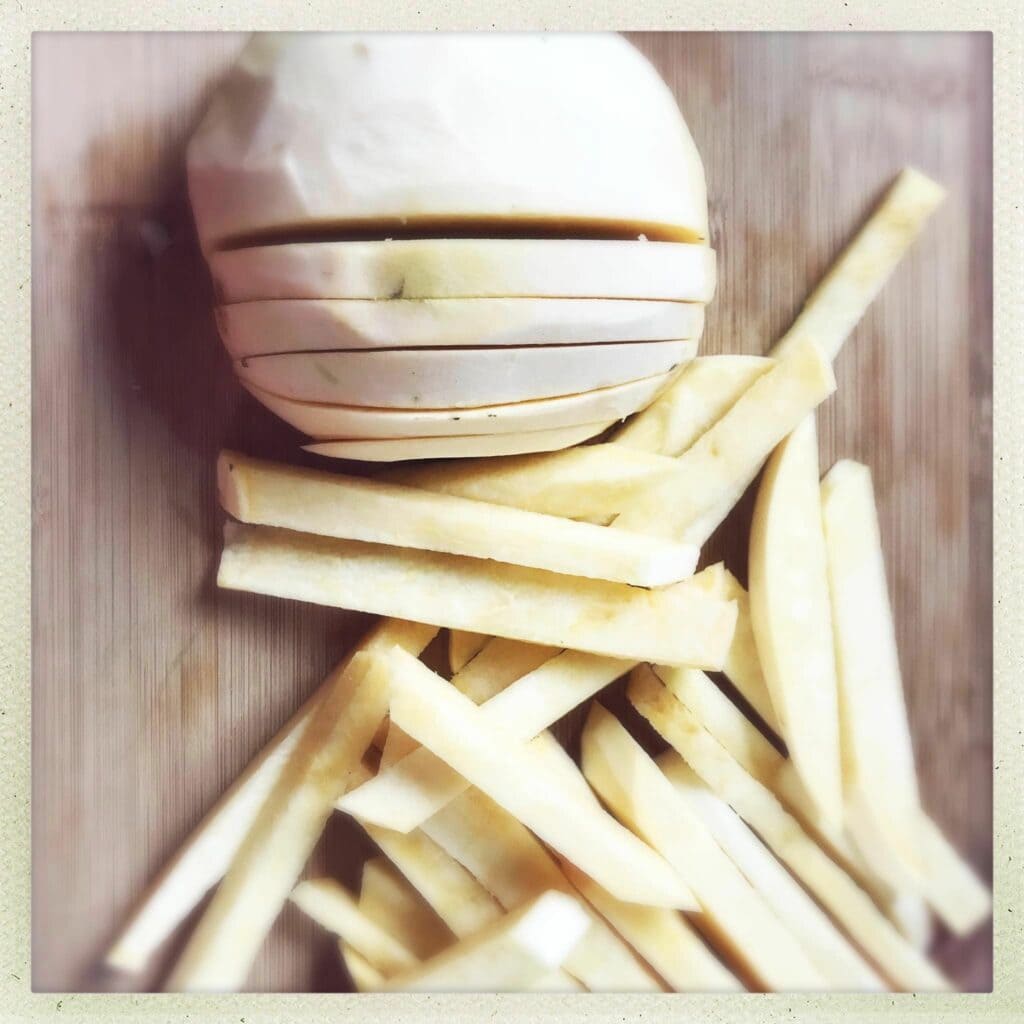
And when it comes to peeling the rutabaga, the skin can be a little tough to peel. Especially with the larger ones.
I found that a good Y peeler makes it easier. And for whatever reason, working top to bottom in smooth strokes yielded better results for me than trying to go around.

Do what works for you, though!
You can also use a food processor shredding blade to make a rutabaga hash instead. You’ll still need to make a few cuts so the pieces fit into your food processor. But not as many.
It’s still a delicious way to get the wonderful benefits of rutabaga.
Once your rutabaga is shredded, toss the hash with the oil and seasonings. Then spread evenly on your baking sheet.
Cook time will be less since your rutabaga isn’t as thick. Try starting with ⅓ of the cook time suggested in the recipe below. If they aren’t done at ⅓ the cook time, check again at half the cook time.
Just be sure to check often so your hash doesn’t burn.
You could also boil and mash them in this low histamine vegetable mash recipe.
Air Fryer vs Oven Fries Rutabaga Fries
I tested this recipe several different ways. I used the broiler, the oven baked method, and even tried using a baking rack.
And I had one of the team members test in her air fryer.
The best overall was the oven baked method.
The broiler method was the next best, but here’s my concern with the broiler.
The fries got burnt edges before they were cooked through. So, the first problem was the uneven cook.
And here’s what you need to know about burnt foods.
Burnt foods contain high levels of advanced glycation end products (AGEs). Studies show that eating advanced glycation end products (called dietary or dAGEs) contributes to increased inflammation and other health issues.
This inflammation can contribute to histamine release.
And you want to reduce inflammation as much as possible with Mast Cell Activation Syndrome or Histamine Intolerance.
So, if you do get a few burnt edges on your oven baked fries, just cut them off.
The same problem happened with the air fryer in terms of burnt edges. Lots of them.
Our team member wants you to know that she did shake the basket numerous times throughout the cook and still got lots of burnt tips. (She also tried the oven baked method and said she’d go with that method when she makes them again for herself.)
She let me know that her air fryer is small and several years old. There may be more improved models now.
So, if you experiment with your air fryer and get good results, please let me know in the comments! Be sure to say which model you have. I’d love to hear all about it!
This rutabaga fries recipe can be customized to fit your dietary needs. Just swap out a few ingredients. Here’s how.
How to Customize Your Rutabaga Fries Recipe
This recipe is low histamine, low oxalate and low lectin.
You can also make it low salicylate and low FODMAP.
Here’s how.
To make this recipe low salicylate:
- Omit rosemary
- Use ghee or tallow instead of avocado oil
To make this recipe low FODMAP:
- Omit garlic and use garlic infused oil or chives instead
And remember to use flat leaf parsley to keep this recipe low oxalate.
This recipe is versatile. You can customize it to your personal taste by using any low histamine herbs and spices that you like.
Just be sure to stay away from higher histamine seasonings like paprika, cayenne, or curry powder.
What to Serve with Rutabaga Fries
Enjoy these fries with:
- Instant Pot Low Histamine Chicken Recipe – Low Lectin, Low Oxalate, Low FODMAP, and Low Salicylate
- Low Histamine Pork Roast Recipe – Low Histamine, Low Oxalate and Low Lectin, with Low Salicylate and Low FODMAP Options
- Rosemary Roasted Garlic Pork Chops – Low Histamine, Low Oxalate, and Low Lectin
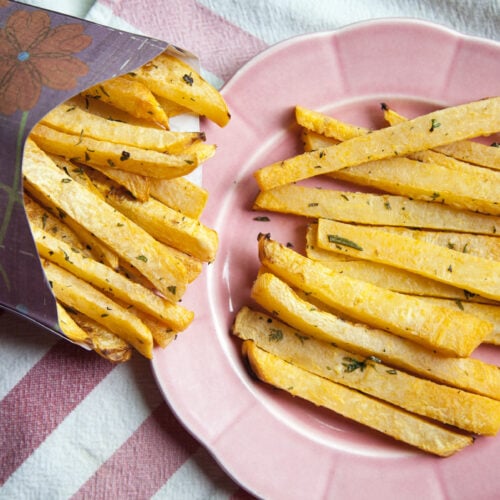
Low Histamine Rutabaga Fries Recipe
Equipment
- Sharp Knife
- Silicone Mat (optional) OR
- Unbleached Parchment Paper (optional)
- Metal Spatula
Ingredients
Rutabaga Fries Ingredients
- 1 Large Rutabaga
- 2 Tablespoons Fresh Rosemary
- 4 Fresh Garlic Cloves
- 1 Tablespoon Flat Leaf Parsley
- ½ Tablespoon Redmond Real Salt (plus more to taste)
Rutabaga Fries Fat (pick 1)
- 2 Tablespoons Avocado Oil (optional)
- 2 Tablespoons Ghee (optional)
- 2 Tablespoons Beef Fat Tallow (optional)
Instructions
- Preheat oven to 425℉.
- Start by peeling your rutabaga.
- Cut a small slice off of either the top or bottom (root or stem end) to create a flat edge.
- Steady your rutabaga on its flat edge on the cutting board.
- Using a large, sharp knife, cut the rutabaga in half.
- Lay the two halves on the cutting board flat side down.
- Cut each of the halves into about ½ inch slices. (The first joint of your index finger to the tip is about 1 inch!)
- Then lay those half-moon shaped slices flat and cut into ½ inch strips. Your rutabaga pieces should now look fry shaped.
- Mince garlic using a garlic press or knife. (Omit for low FODMAP, replace with finely chopped chives.)
- Remove rosemary leaves from the woody stem. (Omit for low salicylate.)
- Finely chop rosemary and parsley.
- In a large bowl, add your rutabaga, garlic (or chives), rosemary, parsley, and salt and toss with the oil of your choice listed above (avocado, ghee, or tallow).
- Spread the rutabaga fries evenly in a single layer on a baking sheet lined with parchment paper or a silicone mat. This makes cleaning up easier, but it is optional.
- Bake for about 40 minutes until the fries are tender. Toss fries at least once, but preferably twice during this cooking time. All ovens are different so keep an eye on yours to make sure they don’t burn!
- Remove from oven and sprinkle with more salt if desired.
- Cool slightly before eating. (They are really hot right out of the oven!)
- Enjoy!
Notes
- Omit rosemary
- Use ghee or tallow instead of avocado oil
- Omit garlic and use garlic infused oil or chives instead
Nutrition
What will you eat with this rutabaga fries recipe?
More Low Histamine Sides
- Mango Low Histamine Salsa – Low Oxalate and Low Lectin
- Roasted Cauliflower with Cherries and Pecans – Low Oxalate and Low Lectin, with Low Salicylate Option
- Coleslaw – Low Oxalate and Low Lectin, with Low FODMAP and Low Salicylate Options
Some links in this website are affiliate links, which means Mast Cell 360 may make a very small commission if you purchase through the link. It never costs you any more to purchase through the links, and we try to find the best deals we can. We only recommend products that we love and use personally or use in the Mast Cell 360 practice. Any commissions help support the newsletter, website, and ongoing research so Mast Cell 360 can continue to offer you free tips, recipes, and info. Thank you for your support!
References
Barbosa‐Lorenzi, V. C., et al. (2011). The lectin ArtinM binds to mast cells inducing cell activation and mediator release. Biochemical and Biophysical Research Communications, 416(3–4), 318–324. https://doi.org/10.1016/j.bbrc.2011.11.033
Bourque, K., Fetters, K. A., & Blake, J. S. (2023, April 6). Why you should stop worrying about olive oil’s smoke points. US News & World Report. https://health.usnews.com/wellness/food/articles/why-you-should-stop-worrying-about-olive-oils-smoke-points
Feske, S., Wulff, H., & Skolnik, E. Y. (2015). Ion channels in innate and adaptive immunity. Annual Review of Immunology, 33(1), 291–353. https://doi.org/10.1146/annurev-immunol-032414-112212
Fiber foods. (2022, June 20). Centers for Disease Control and Prevention. https://www.cdc.gov/diabetes/library/features/role-of-fiber.html
FoodData Central. (n.d.). https://fdc.nal.usda.gov/fdc-app.html#/food-details/168454/nutrients
HappyForks. (n.d.). Recipe analyzer. https://happyforks.com/analyzer/result
Kawamoto, E. M., Vivar, C., & Camandola, S. (2012). Physiology and pathology of calcium signaling in the brain. Frontiers in Pharmacology, 3. https://doi.org/10.3389/fphar.2012.00061
Mateos‐Aparicio, P., & Rodríguez‐Moreno, A. (2019). The impact of studying brain plasticity. Frontiers in Cellular Neuroscience, 13. https://doi.org/10.3389/fncel.2019.00066
Office of Dietary Supplements – Potassium. (n.d.). https://ods.od.nih.gov/factsheets/Potassium-HealthProfessional/
Uribarri, J., et al. (2010). Advanced glycation end products in foods and a practical guide to their reduction in the diet. Journal of the American Dietetic Association, 110(6), 911-916.e12. https://doi.org/10.1016/j.jada.2010.03.018
Von Bernhardi, R., et al. (2017). What is neural plasticity? In Advances in Experimental Medicine and Biology (pp. 1–15). https://doi.org/10.1007/978-3-319-62817-2_1
Weaver, C. M. (2013). Potassium and health. Advances in Nutrition, 4(3), 368S-377S. https://doi.org/10.3945/an.112.003533


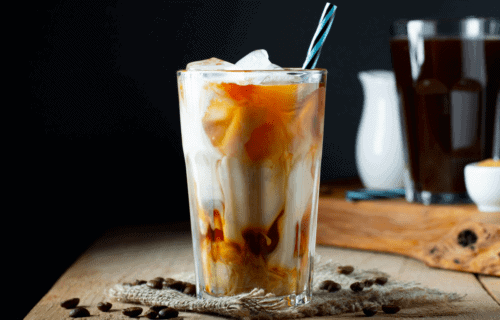
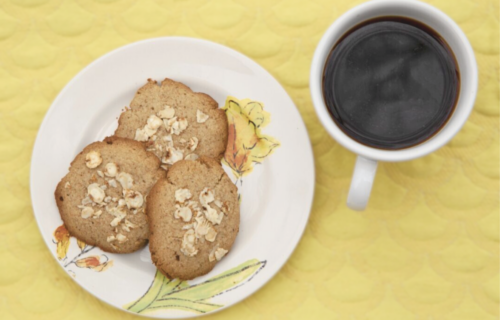
Add A Comment